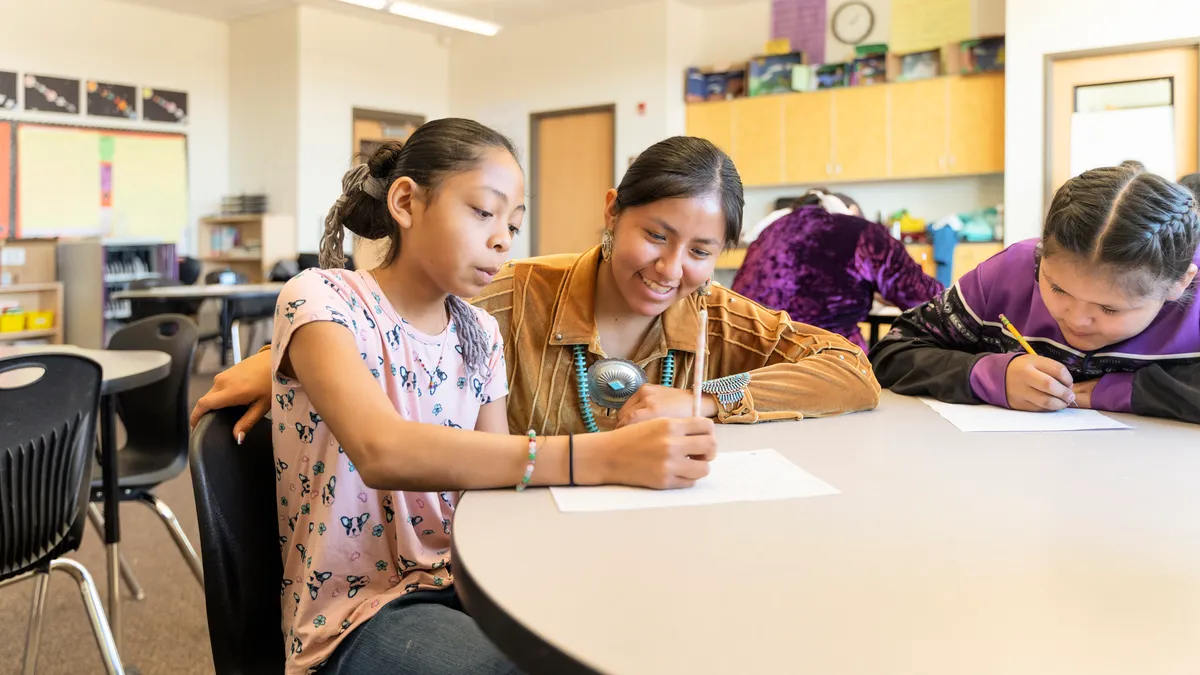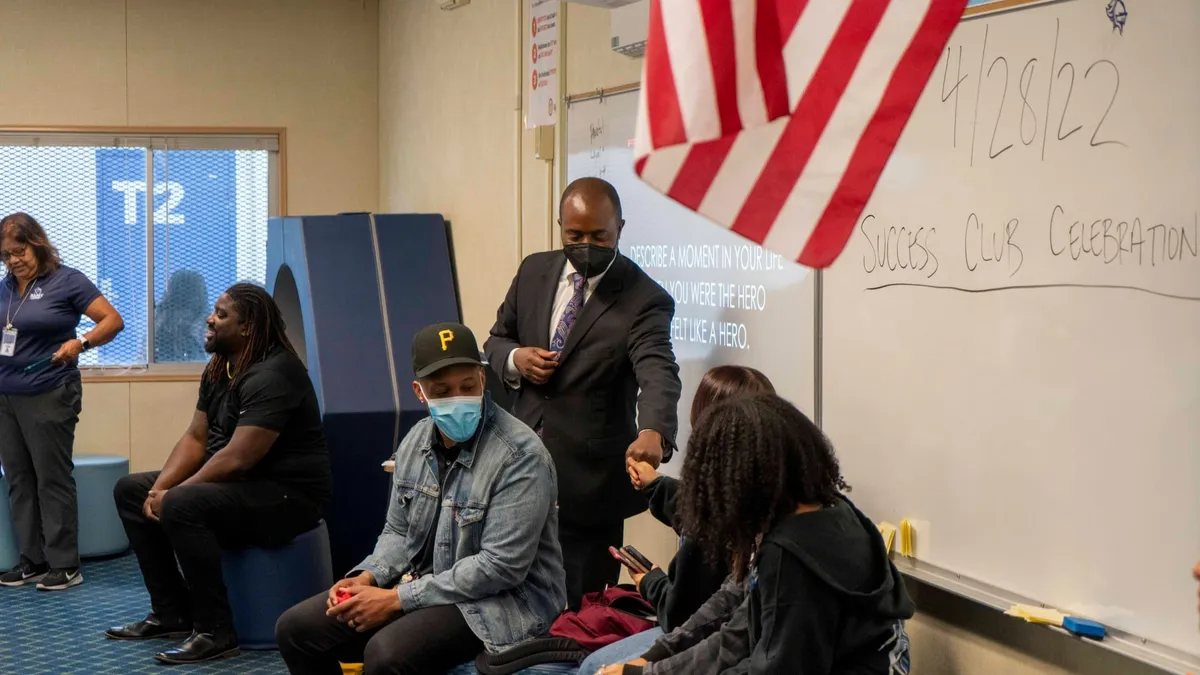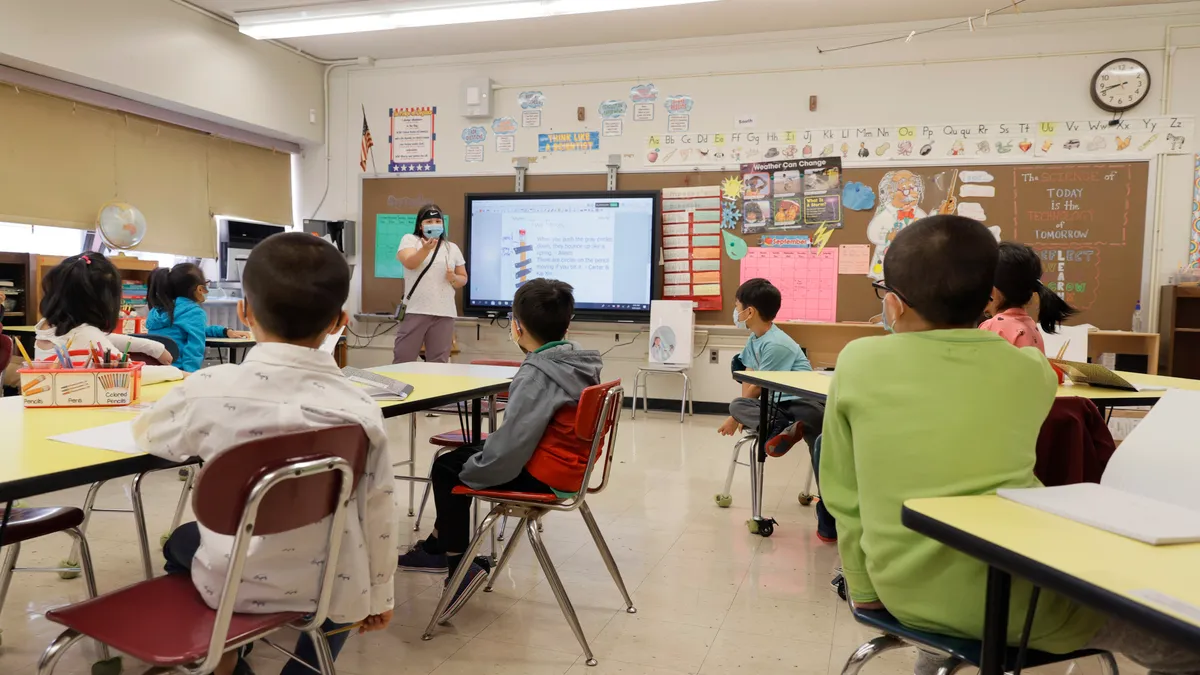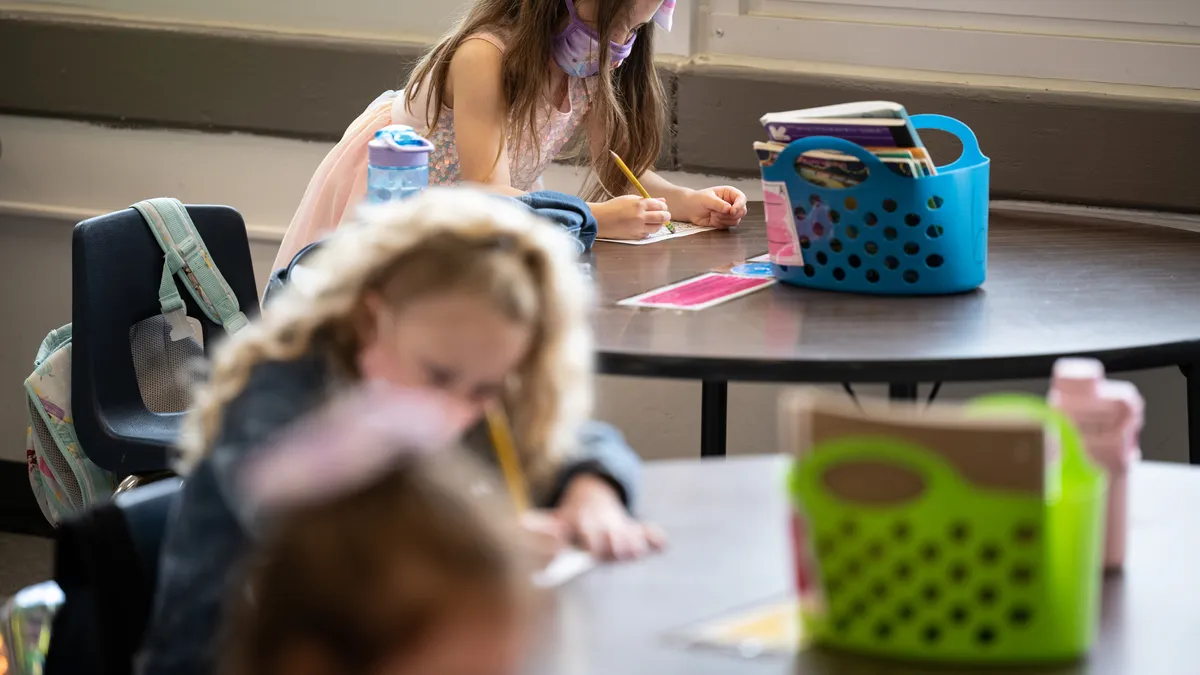Patrick Finley and Damon McCord are co-principals of the Metropolitan Expeditionary Learning School in Queens, New York.
After reading recent articles regarding diversity initiatives kicking off across the New York City Department of Education (NYCDOE), one might think that there are no diverse schools achieving strong student outcomes within some of the districts mentioned.
Our school, the Metropolitan Expeditionary Learning School (MELS), is located in District 28 in Queens, one of the districts featured in the diversity initiative within the NYCDOE, and is also one of the most diverse schools in New York. Our rich diversity is one of the primary reasons our students succeed in school and into their postsecondary lives. Heading into our 10th year as a school, our data supports this claim, with graduation and college data that rivals some of NYC’s screened schools but is almost unheard of for unscreened, Title I schools.
Similar to the stated goals of many diversity initiatives, the classrooms at MELS don’t reflect any one neighborhood in the district. Instead, our classes are full of students who reflect the richness in diversity of languages, religions, ethnicities, income levels and performance levels of students throughout Queens. Using the racial categories provided by the NYCDOE, the MELS student body is 20% Asian, 17% Black, 40% Latinx,17% white and 6% in multiple smaller groups.
In addition, 19% of students have disabilities and 61% of our students qualify for free lunch. This diversity did not happen by accident. MELS represents the diversity of the borough by design from its inception. There have been a series of decisions we have made to ensure that MELS did not end up as another segregated school in the NYCDOE. And although we don’t profess to have all of the answers, we do believe that school leaders can help to support efforts to better integrate our schools.
Begin with outreach
District 28 is a diverse district as a whole. As in most of the city, this rich diversity is unfortunately not reflected in many of the individual schools. The district is composed of many neighborhoods, including Forest Hills (with a median income of $76,000) and Jamaica (with a median income of $48,000).
As MELS was being built, we began with outreach to all of the stakeholders throughout neighborhoods to spread the message that our school was not for any one group, but instead was a space for all students throughout the entire district. We made efforts to reach out to all of the elementary schools in the area, to all of the elected officials and to many important voices across all areas of the district. As a result of these efforts, our school’s population doesn’t just reflect the area where our school is located; our 6th graders feed in each year from almost 25 different elementary schools that represent all of the neighborhoods in District 28, from South Ozone Park to Rego Park.
Encourage all students to apply
In 2008, when we pitched our idea for MELS to the NYCDOE during the school application process, we were clear that test scores and other metrics wouldn’t be used. The achievement gap exists and is perpetuated in school systems through various “screens” and tests that select and stratify students.
We are an unscreened school. To set up an application process that was dependent on test scores would have funneled students into a new building in a way that disproportionately favored students from more affluent schools, further perpetuating segregation in a district that has a history of failed integration efforts.
Build a school around the whole child
When our students arrive, they don’t come with all of their friends from elementary school. Most students at MELS encounter students from backgrounds different than their own and different from their elementary school experience. As a NYC Outward Bound School, MELS begins each day with an advisory period known as Crew as part of our work to bring students together as a community. Crew is the lifeblood of our school — it is the place where students learn about one another as individuals, and our 6th graders go on a four-day backpacking trip as part of this experience.
Without taking this important instructional time to support collaboration and build community, schools risk leaving students feeling alienated and alone. Our Crew structure demonstrates that with intentionally designed structures that build community, our students feel a sense of belonging and believe in one another. This is supported in recent data we collected as part of the “Building Equitable Learning Environments” study by EL Education, which showed 88% of our middle school students felt a sense of belonging in Crew, with another 92% stating that the other students in their Crew accepted them for who they are.
View the school as a whole community
As school leaders, we also made the decision not to track students by ability level. In order for our school to truly be diverse, we knew that it was important not to build separate communities within our building but instead build a strong educational experience for all students. Additionally, tracking would undercut our belief that all students have much to learn from one another, which builds skills that strengthen their academic work and sets them up for success in the diverse world that exists beyond our school doors.
We see the results in our data. MELS boasts an average graduation rate of 97.4% paired with a 98% college acceptance rate, while achieving a college enrollment rate of approximately 83% 18 months after graduation (the highest rate of any unscreened Title I school in NYC). Students at MELS compete at the state and national and levels in speech competitions, win full academic and athletic scholarships, receive acceptances to Ivy League universities, and qualify for National Merit recognition, including one student who was a finalist. We have worked to be a school that meets the needs of all learners and set students up for success after middle and high school without building separate communities within our building.
There is no magic formula for working to dismantle the segregation that exists within our schools, but we do believe that each of these steps was instrumental in our process. We know that many factors may be outside of some school leaders’ control and that much more needs to be done with policy at the state and national level to provide district leaders with the means and opportunities to further integrate schools. But as districts engage in this work, it is important to seek out instances where schools have defied the odds to create truly diverse schools and examine the approaches that led to strong results.





















